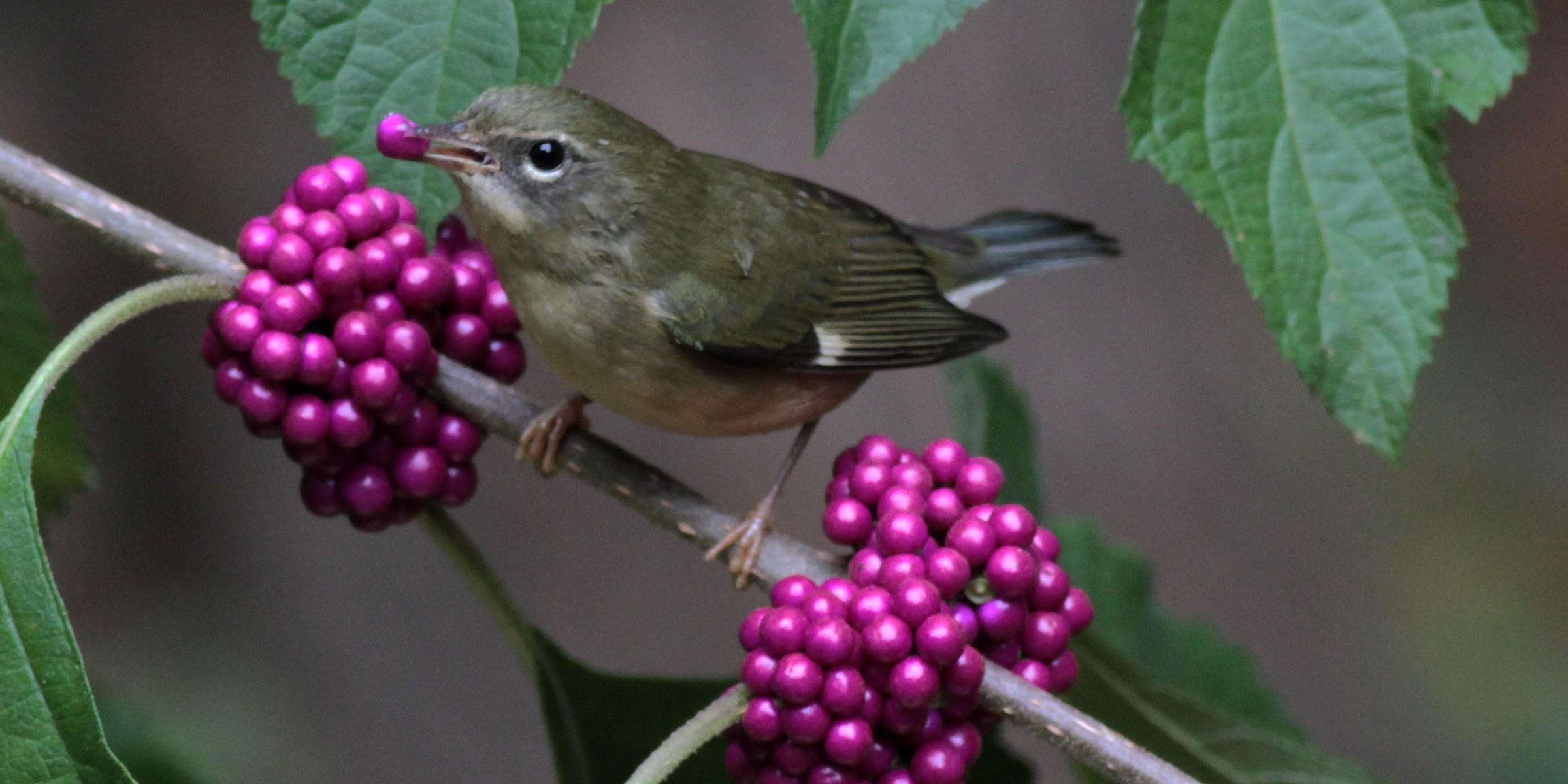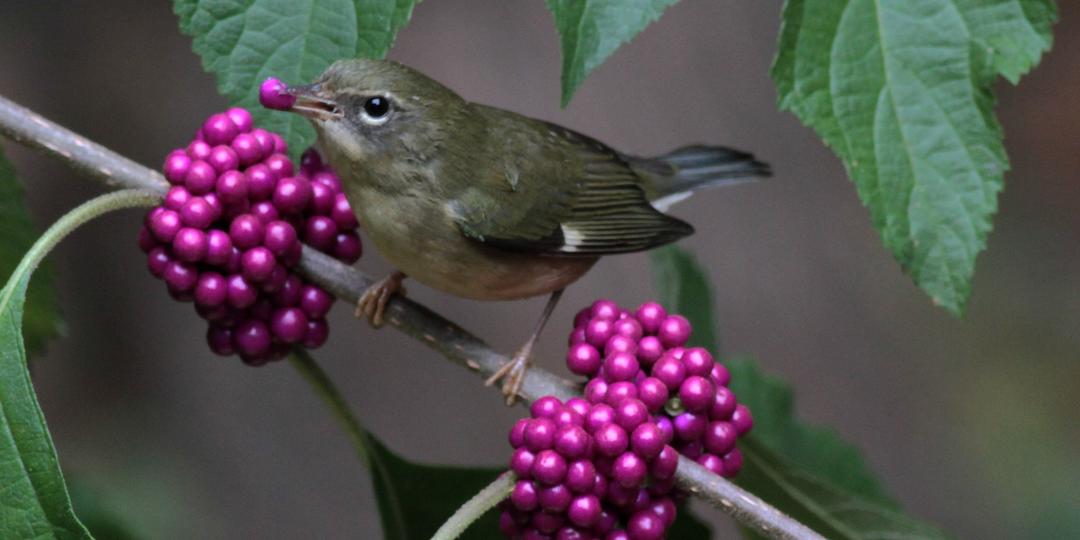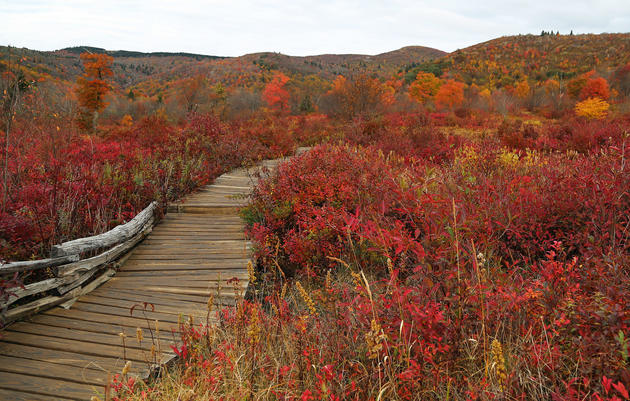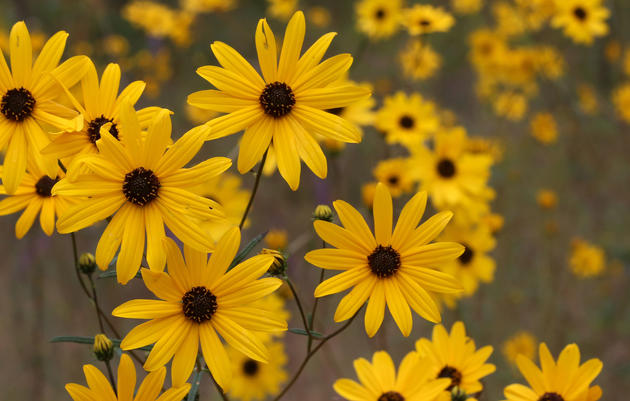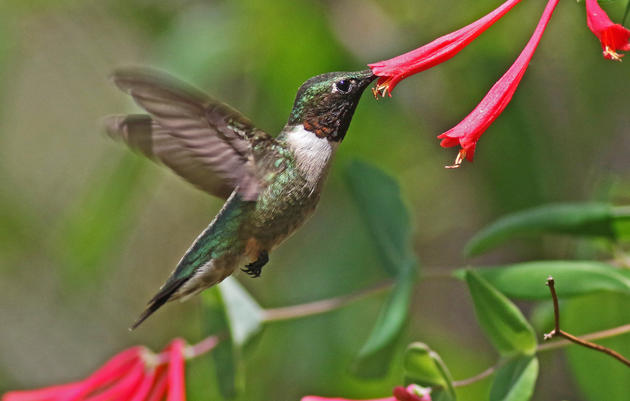Berries are so important to birds. Check out these top four types of bountiful berry plants on our 2018 Bird-Friendly Native Plants of the Year list!
Throughout all four seasons, birds flock to berry-producing plants for the insects they attract as well as their flavorful fruits. When adding native berry-producing plants to your yard, look for varieties that fruit at different points of the year. This will give birds yummy food to eat year-round!
“Native plants are just as beautiful as invasive plants,” said Ben Skelton, owner of Skelton’s Landscaping Service and New Hope Audubon Society volunteer. “By adding native plants to your yard you’ll immediately help insects, which will then draw more birds to your yard.”
Find these and more berry-producing native plants -- and where to buy them -- via our zip-code plant finder.
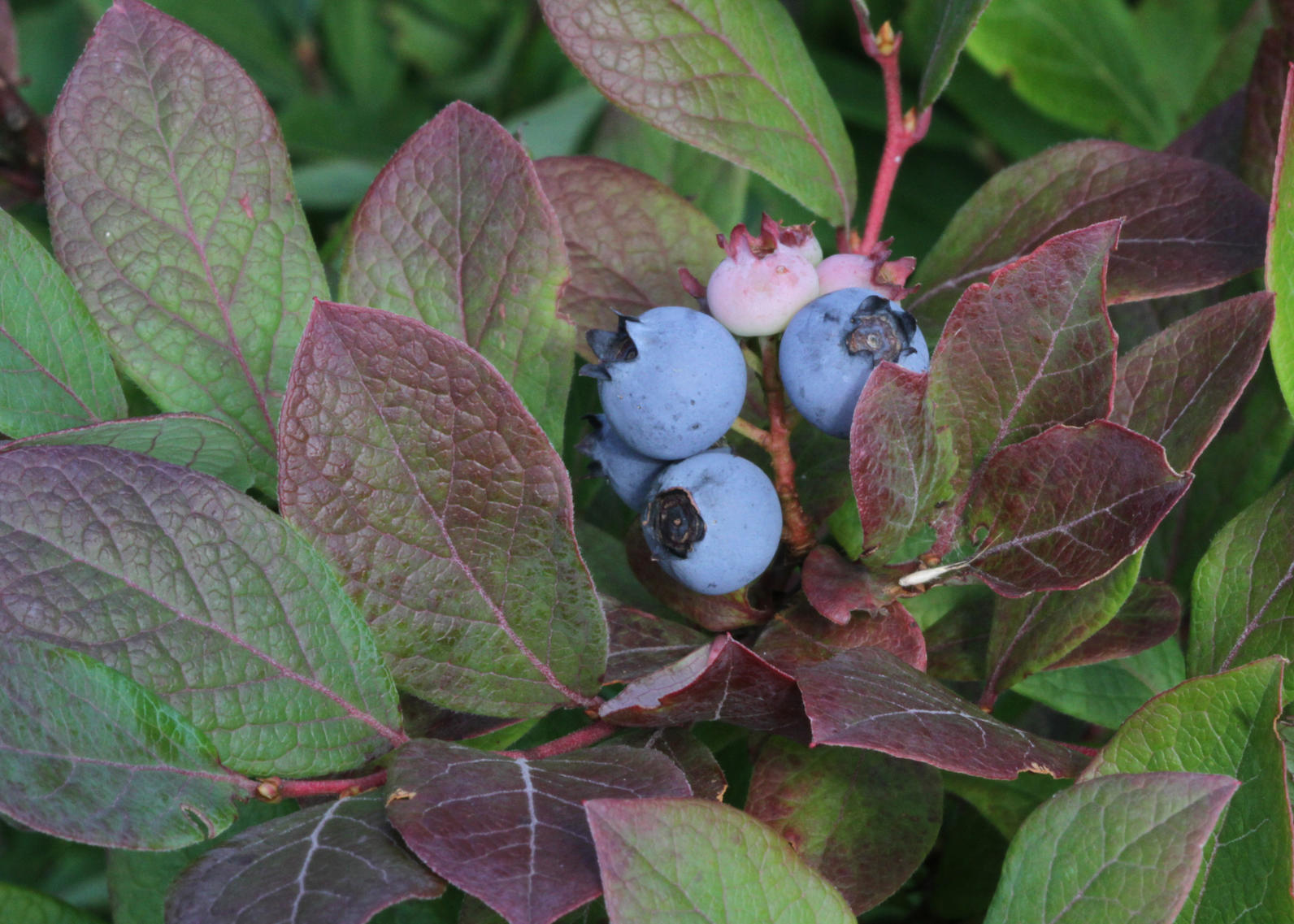
SUMPTUOUS SUMMER: BLUEBERRIES
During the summer, blueberries grow on bushes, most of which peak at about 6 feet tall. In the spring, bunches of white blossoms pop up on the bushes and are then pollinated by bees. Eventually, each blossom will turn into one blueberry. At first, they are hard and green, then red-purple and finally blue and sweet.
“Native plants that produce soft fruit are a great way to attract birds to your yard,” said Mark Johns, operations and program supervisor at Hemlock Bluffs Nature Preserve. “Blueberry shrubs can be a real addition to your yard—they add layering which is attractive to birds.”
Blueberries are perfect for both birds and people! The bushes also support 286 moth and butterfly species in North America.
They are beloved by many types of birds, including the Northern Mockingbird, Blue Jay, Gray Catbird, Brown Thrasher and Red-bellied Woodpecker.
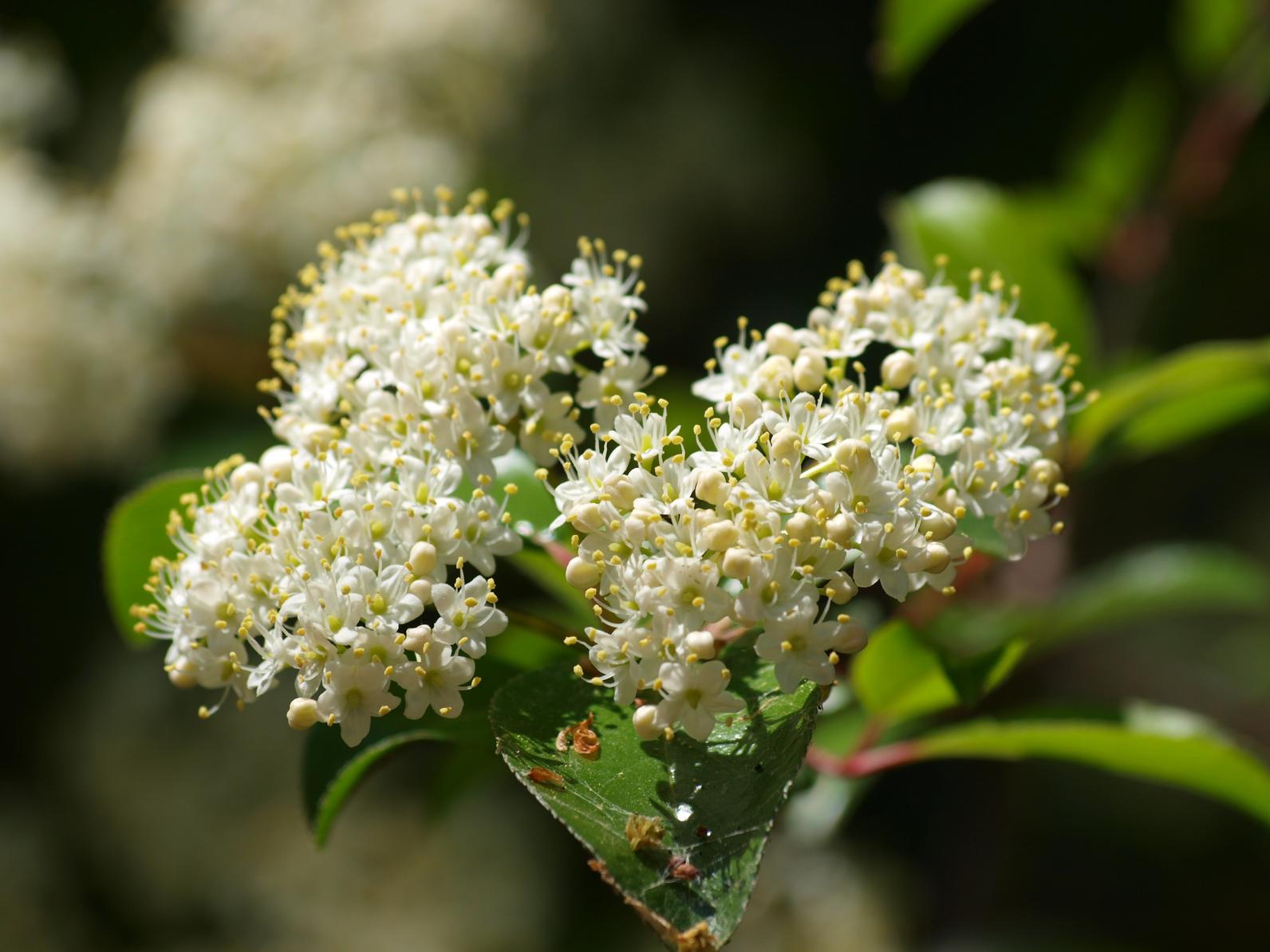
BLISSFULLY BEAUTIFUL: BLACKHAW VIBURNUM
The Blackhaw Viburnum (Viburnum prunifolium) adds nice color to anyone’s landscape throughout the seasons, but especially during the fall. It can be a shrub or a small tree and grows to be about 12 to 15 feet tall. In the spring, Blackhaw Viburnum has creamy white flowers that form clusters on the plant. By September and October, edible berries appear after the blooms, starting with a pinkish color and turned to blue-black when mature. The berries are often used to make jams and preserves.
Many birds love munching on Blackhaw Viburnum berries, including the Wood Thrush, Northern Mockingbird, Gray Catbird, Brown Thrasher and Cedar Waxwing.

ENDLESS POSSIBILITES WITH POSSUMHAW
Possumhaw (Viburnum nudum) is native to low woods, bogs and swamps in eastern and southeastern US. It has dark green, glossy leaves and it produces aromatic, flat-topped clusters of white flowers in the spring. Clusters of berries that change from a light pink to purplish-black as they ripen follow the flowers. The flowers are pollinated by many small insects such as sweat bees. The berries are very acidic, but edible! In late summer to early fall, the berries can be seen in shades of both a beautiful blue-purple and deep pink. This shrub or small trees can grow up to 20 feet tall.
Our native Possumhaw species support 97 native moths and caterpillars.
Birds who love this plant include Wood Thrush, Northern Mockingbird, Gray Catbird and Cedar Waxwings.
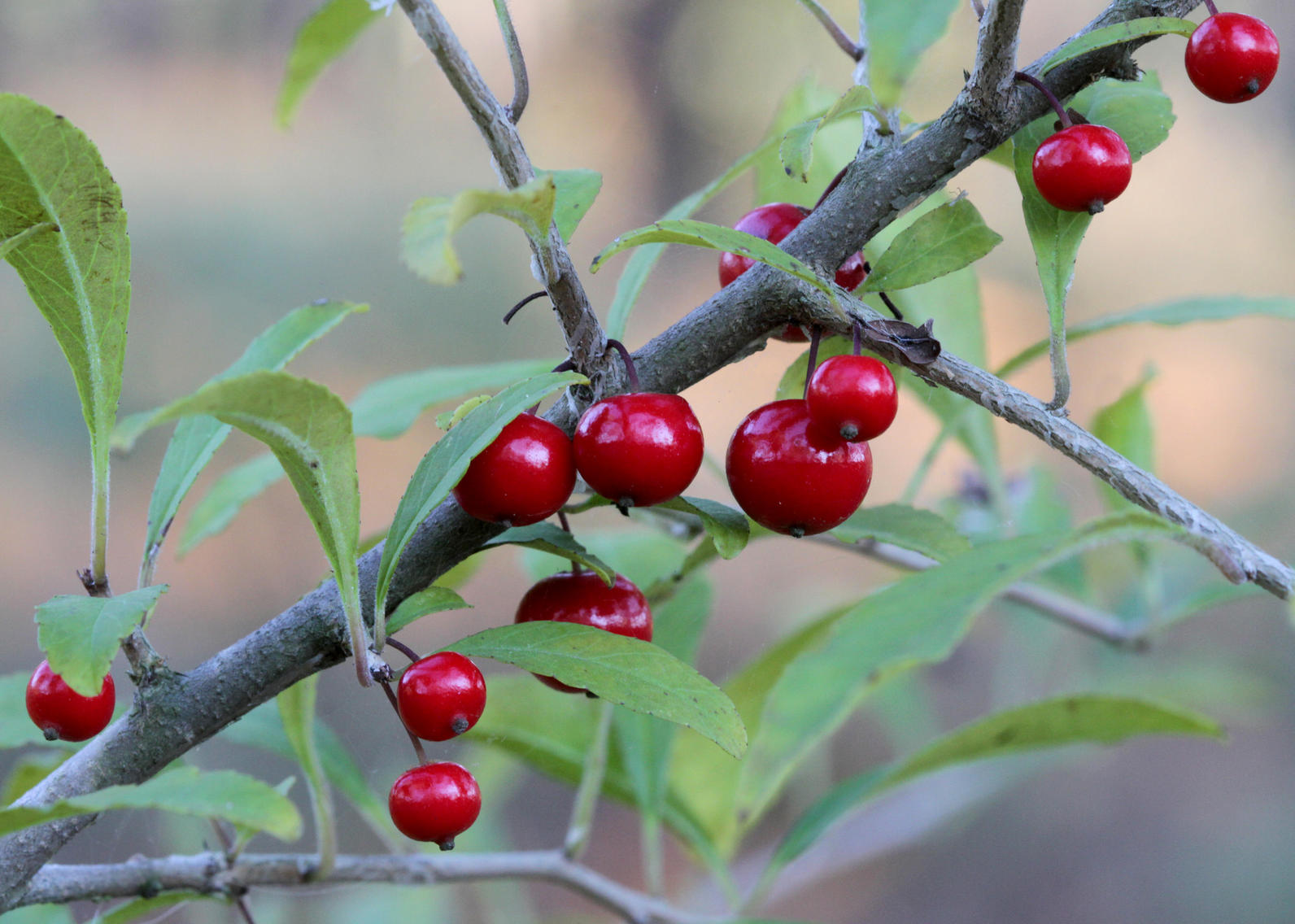
DECK YOUR GARDEN WITH DECIDUOUS HOLLY
Deciduous Holly (Ilex decidua) is best grown in the lower mountains, piedmont and coastal plain. You can expect to see fruit during the winter months, at least September through January! This small tree or shrub is a true holly, but unlike the popular American Holly, it loses its leaves in the winter. It can grow 15-30 feet tall, with pale gray, twiggy, horizontal branches. The limbs of a female (berry-producing) holly can be covered with hundreds of small red berries during the cold months. In many places, Deciduous Holly is the only bright spot of color during the cold, winter months!
Birds who love this plant include Brown Thrasher, Cedar Waxwing, Red-bellied Woodpecker and Downy Woodpecker.
These berries are just a few of the plants on our 2018 Bird-Friendly Native Plants of the year list. We’ve also featured seed, nectar and nut-bearing plants: learn more about our other 2018 picks here!

